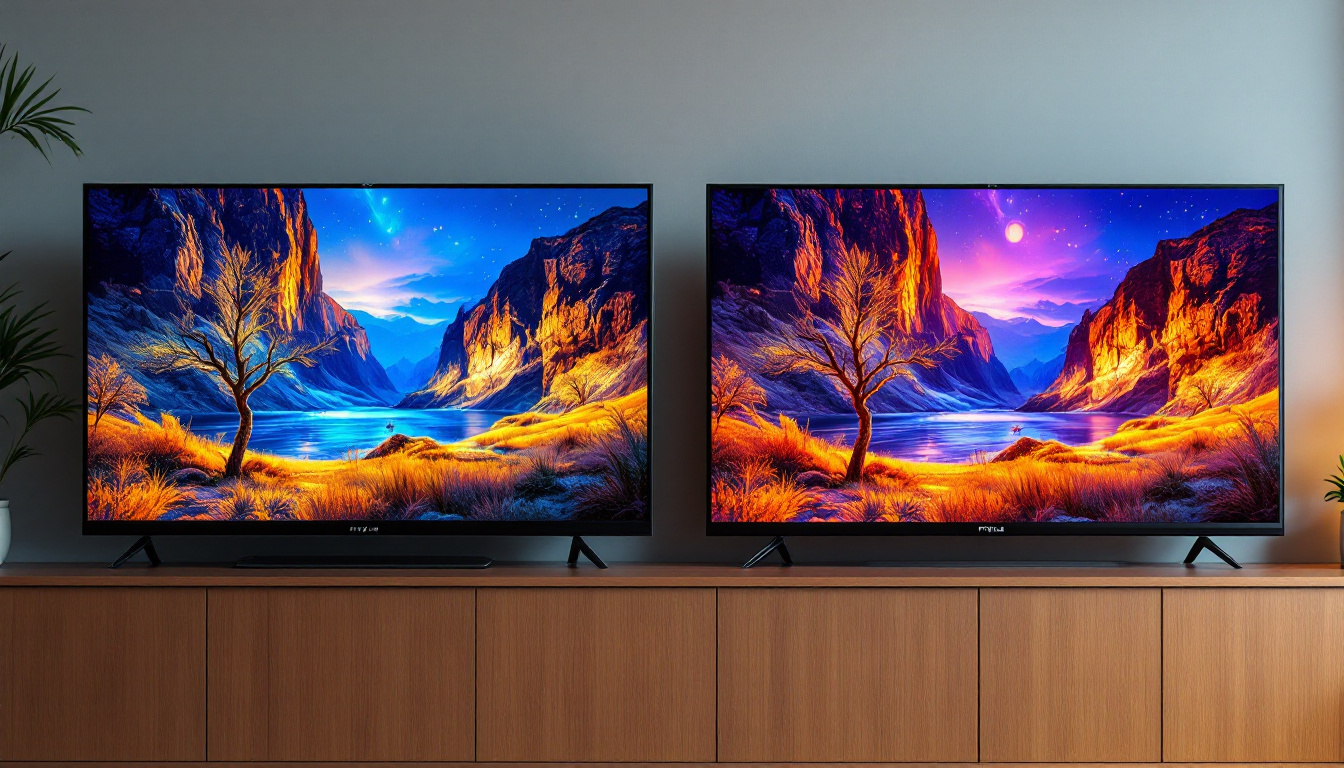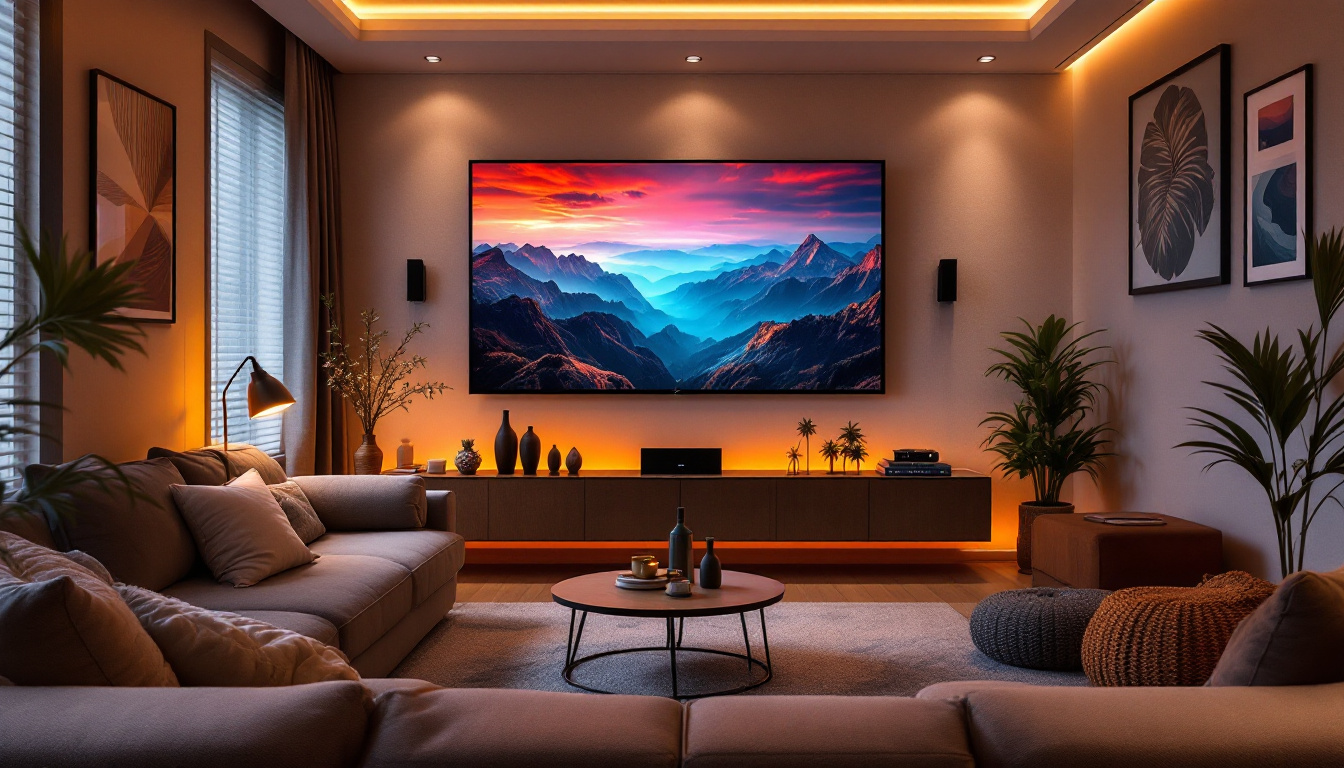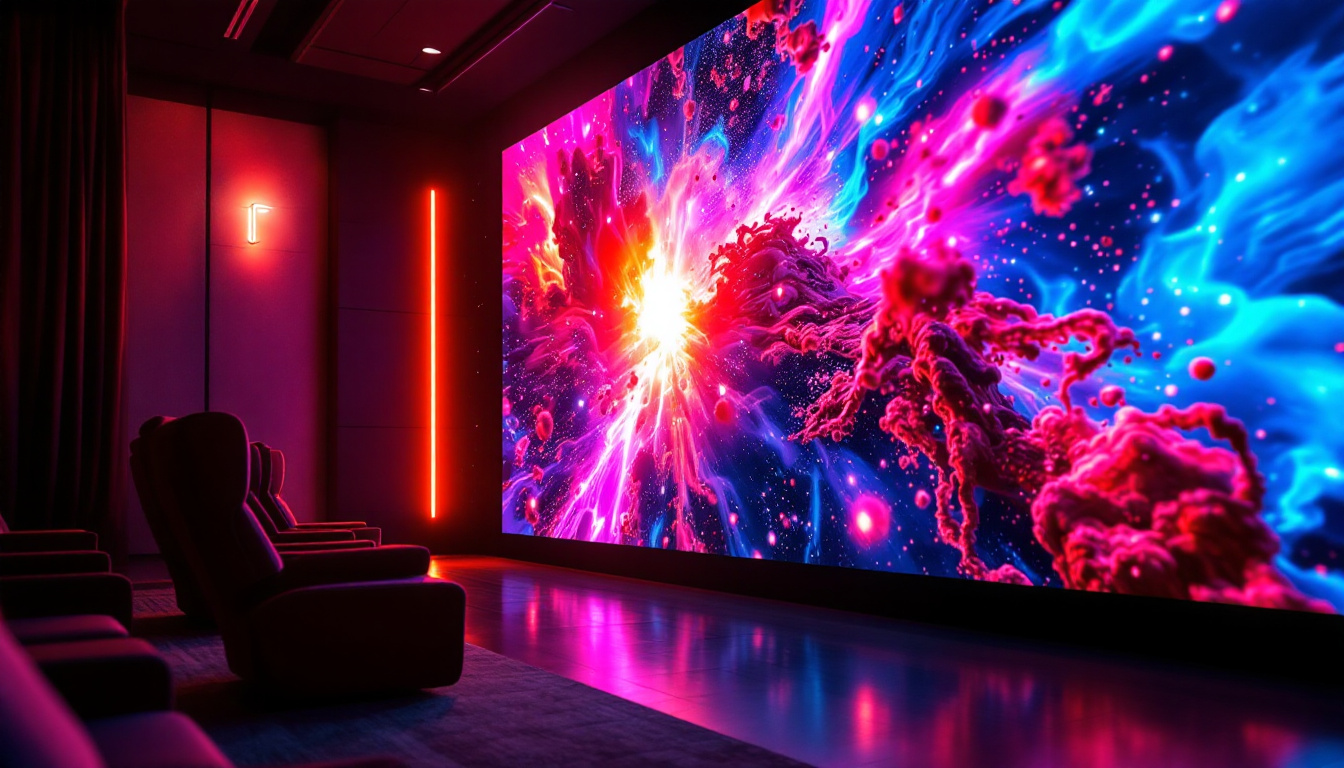The evolution of display technology has brought about various options for consumers, with LCD and Plasma being two of the most discussed types. Each technology has its own unique characteristics, advantages, and disadvantages, making the choice between them a significant consideration for anyone looking to invest in a new television or monitor. This article delves into the intricacies of LCD and Plasma displays, highlighting their differences, benefits, and the role of LED technology in modern displays.
Understanding LCD Technology
Liquid Crystal Display (LCD) technology has become a staple in the world of screens, from televisions to computer monitors. LCDs use liquid crystals sandwiched between layers of glass or plastic to create images. This technology has evolved significantly over the years, leading to the development of various subtypes, including LED-backlit LCDs.
How LCD Works
At its core, an LCD screen relies on a backlight to illuminate the liquid crystals. The crystals themselves do not emit light; instead, they manipulate the light from the backlight to create images. When an electric current passes through the liquid crystals, they align in such a way that allows varying amounts of light to pass through, resulting in different colors and brightness levels.
Modern LCDs often utilize LED (Light Emitting Diode) technology for backlighting. This advancement has led to improved energy efficiency, better color accuracy, and enhanced contrast ratios compared to traditional fluorescent backlights. Furthermore, the introduction of technologies such as local dimming and quantum dots has further refined the visual experience, allowing for deeper blacks and more vibrant colors, which are essential for high-definition content.
Advantages of LCD Displays
One of the primary advantages of LCD displays is their thin and lightweight design, making them ideal for wall mounting and saving space. Additionally, LCDs tend to consume less power than their Plasma counterparts, leading to lower electricity bills over time.
Moreover, LCD screens are less susceptible to screen burn-in, a phenomenon where static images can become permanently etched into the display. This makes them a safer choice for varied content consumption, such as gaming or displaying news tickers. The durability of LCDs is also noteworthy; they are generally more resistant to temperature fluctuations and humidity, making them suitable for a variety of environments, from homes to offices and even outdoor displays.
Another significant advantage of LCD technology is its versatility in application. LCDs are not only found in consumer electronics but also in industrial and medical settings, where they are used in everything from diagnostic equipment to control panels. Their ability to maintain clarity and color accuracy under different lighting conditions makes them invaluable in situations where precise visual information is critical. Additionally, advancements in touch screen technology have integrated LCDs into smartphones and tablets, revolutionizing the way we interact with devices and access information on the go.
Exploring Plasma Technology
Plasma displays, once the pinnacle of large-screen technology, utilize a different approach to create images. They consist of small cells filled with ionized gas (plasma) that emit light when electrically charged. This technology is particularly known for delivering vibrant colors and deep blacks, making it a favorite among movie enthusiasts and gamers. In addition to their impressive visual capabilities, Plasma displays are often lauded for their ability to reproduce a wider color gamut compared to traditional LCD screens, allowing for more lifelike images that capture the nuances of the original content.
How Plasma Works
In a Plasma display, each pixel is made up of tiny cells filled with noble gases. When electricity is applied, these gases become ionized and emit ultraviolet light. This light then excites phosphors coating the cells, producing visible colors. The ability to control each pixel individually allows for exceptional contrast and color depth. The technology behind Plasma displays involves a complex interplay of physics and chemistry, where the ionization process not only generates light but also contributes to the longevity and durability of the screen, making it a robust choice for various applications.
Plasma displays are known for their wide viewing angles, meaning that colors and brightness remain consistent even when viewed from the side. This characteristic makes Plasma a popular choice for large viewing areas. In environments such as home theaters or public displays, the ability to maintain image quality from different angles ensures that everyone can enjoy the same cinematic experience, regardless of their position in the room.
Advantages of Plasma Displays
One of the standout features of Plasma technology is its superior color accuracy and contrast ratio. The ability to produce true blacks enhances the overall viewing experience, especially in dark scenes. Additionally, Plasma displays can achieve higher refresh rates, making them ideal for fast-paced action and sports. This responsiveness is crucial for gamers who require quick reaction times and smooth visuals to enhance their competitive edge. Furthermore, the technology allows for minimal motion blur, ensuring that fast-moving images remain sharp and clear.
Another advantage is their performance in dimly lit environments. Plasma screens excel in low-light conditions, providing a more immersive experience for movie watching or gaming. The deep blacks and rich colors create a captivating atmosphere that draws viewers into the narrative, making it feel as though they are part of the action. Moreover, the inherent design of Plasma displays contributes to their ability to handle high dynamic range (HDR) content, allowing for a more dynamic and engaging viewing experience that showcases the full spectrum of brightness and color detail.
Comparing LCD and Plasma Displays
When choosing between LCD and Plasma displays, several factors come into play. Understanding the differences in performance, longevity, and price can help consumers make an informed decision.
Picture Quality
Picture quality is often the most critical factor for consumers. While both technologies offer impressive visuals, Plasma displays generally outperform LCDs in terms of color accuracy and contrast. The deep blacks produced by Plasma screens enhance the viewing experience, particularly in dark scenes.
However, LCD technology has made significant strides in recent years, particularly with the advent of LED backlighting. High-end LCDs can now rival Plasma displays in terms of brightness and color reproduction, making the gap less pronounced. Furthermore, advancements such as Quantum Dot technology have further improved the color gamut and overall vibrancy of LCD screens, allowing them to deliver stunning visuals that can captivate viewers. This evolution in LCD technology means that consumers now have more options than ever, with some models offering exceptional performance that can meet the demands of even the most discerning film enthusiasts.
Longevity and Burn-In Issues
Longevity is another crucial aspect to consider. LCD displays typically have a longer lifespan than Plasma screens, often lasting over 60,000 hours compared to Plasma’s 30,000 to 40,000 hours. Additionally, the risk of burn-in is a significant concern with Plasma technology. Static images left on the screen for extended periods can result in permanent ghosting, which is less of an issue with LCDs. This makes LCDs particularly appealing for users who may leave their screens on for long periods or use them for varied content, such as video games or news channels, where static logos can be a concern.
Moreover, the lower power consumption of LCDs compared to Plasmas contributes to their appeal. LCDs generate less heat and consume less energy, making them a more environmentally friendly option over time. This efficiency can lead to lower electricity bills, which is an important consideration for many households. As technology continues to advance, the gap in longevity and energy efficiency between these two display types may further influence consumer preferences.
Price and Availability
Price is often a decisive factor for consumers. Generally, LCD displays are more affordable than Plasma models. As Plasma technology has become less common, the availability of Plasma displays has decreased, leading to higher prices for the remaining models. Conversely, LCDs are widely available in various sizes and price ranges, catering to a broader audience. Retailers often offer a plethora of options, from budget-friendly models to high-end displays packed with the latest features, making it easier for consumers to find a display that fits their needs and budget.
In addition to price, it’s worth noting that the cost of ownership can vary significantly between the two technologies. While the initial purchase price of a Plasma display may be lower in some cases, the potential for higher energy consumption and shorter lifespan can lead to increased costs over time. Consumers should also consider the availability of replacement parts and warranty services, as these factors can impact long-term satisfaction and usability. As the market continues to evolve, staying informed about the latest developments in display technology will empower consumers to make choices that best suit their viewing habits and financial considerations.
The Role of LED Technology
LED technology has revolutionized the display market, particularly in the realm of LCDs. It is essential to understand how LED backlighting enhances LCD performance and how it differs from traditional LCD displays.
What is LED Backlighting?
LED backlighting refers to the use of Light Emitting Diodes to illuminate the liquid crystals in an LCD screen. This technology offers several advantages over traditional fluorescent backlighting, including improved energy efficiency, better color accuracy, and enhanced contrast ratios.
There are two primary types of LED backlighting: edge-lit and full-array. Edge-lit LED displays use LEDs positioned around the perimeter of the screen, while full-array LED displays feature an array of LEDs behind the entire screen. Full-array technology allows for local dimming, where specific areas of the screen can be dimmed or brightened independently, resulting in better contrast and deeper blacks.
Benefits of LED Technology in LCDs
One of the most significant benefits of LED technology is its energy efficiency. LED backlit LCDs consume less power than their fluorescent counterparts, making them an environmentally friendly option. This efficiency also translates to lower electricity bills for consumers.
Additionally, LED technology allows for thinner and lighter displays, making modern televisions more aesthetically pleasing and easier to mount on walls. The improved color accuracy and contrast ratios have also made LED-backlit LCDs a popular choice among consumers seeking high-quality visuals.
Conclusion: Making the Right Choice
Choosing between LCD and Plasma displays ultimately depends on individual preferences and viewing habits. While Plasma technology offers superior color accuracy and contrast, LCDs have the advantages of longer lifespan, lower power consumption, and a wider range of price options.
With the rise of LED backlighting, LCD displays have become increasingly competitive in terms of picture quality, making them a viable option for many consumers. It is essential to consider factors such as viewing environment, content type, and budget when making a decision.
In the end, both LCD and Plasma technologies have their unique strengths and weaknesses. Understanding these differences can help consumers make an informed choice that best suits their needs and enhances their viewing experience.
Discover the Future of Visual Display with LumenMatrix
As you consider the best display technology to meet your needs, take the next step with LumenMatrix, a pioneer in LED display innovation. Our extensive range of solutions, from Indoor and Outdoor LED Wall Displays to specialized options like Vehicle, Sports, and Floor LED Displays, is designed to bring your visual communication to life. Experience the ultimate in brand visibility and audience engagement with our Custom, All-in-One, and LED Transparent Displays. Check out LumenMatrix LED Display Solutions today and transform the way you share your message with the world.































